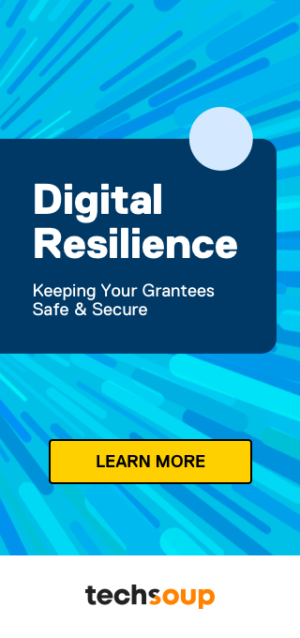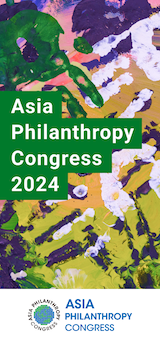Activating together is a movement strategy for the long haul. Since the pandemic, community-based nonprofits and on-the-ground organisers have been continuously challenged to respond in crisis mode. While critical, creating spaces where they can build visions for systemic change is equally necessary.
This year’s ‘We Give Summit’ offered particularly timely insights for collective giving groups to partner in creating and sustaining such spaces. Here are three key takeaways from the Next Gen Giving Circle, a group of young professionals in the Washington, DC metro area.
Trust is crucial for systems change
Dan Pallotta’s conversation with Sara Lomelin on “Moving from Charity to Change” challenged the conventional approaches to solving issues like hunger and homelessness. Often, funders opt to invest in tried-and-true approaches that have historically made an impact without ultimately disrupting or solving the root causes underlying each issue.
Funders – and yes, that includes those of us giving $25 per month to a giving circle – must recognise that we yield power in our decision-making. We can choose where our dollars go and, if we want to start making a real impact in our communities, we need to trust organisations with the bold, unique, and innovative solutions that may typically be considered risky.
It is not charity, but partnership
As part of the We Give Summit, Philanthropy Together supported a CircleUp Social in the DMV region, where we gathered local giving circles, philanthropists, and nonprofits for a panel discussion on equity in philanthropy. One of the speakers, Tamira Benitez from Diverse City Fund, shared the framing: It is not charity, but partnership. Instead of viewing our involvement as “giving back to the community,” how might we engage as partners in making change happen?
Partnerships require trusting relationships. Donating money is one of many ways to show up as a partner. Mapping community connections (as highlighted during the Summit’s “Map Your Ties” session) is another way to share people power, and identifying the role you play in a larger ecosystem of change is an important way to bring additional skills and resources to the table.
Get creative in moving forward together
Though it can feel intimidating to incorporate or shift into more nontraditional means of philanthropy, many peers in the collective giving movement have successfully developed and used creative grantmaking strategies. During the Summit, we heard how certain giving circles fund advocacy efforts through 501(c)(4)s or micro-loans through Community Development Financial Institutions (CDFI’s). Others offer mutual aid and provide cash assistance directly to people in need.
As the Next Gen Giving Circle continues cultivating the next generation of philanthropists, we are also considering applying lessons from the We Give Summit to include more youth voices. Like young people before us, Gen Z and Gen Alpha have been highly engaged in activism and championing progressive values. How might we channel these values into our collective giving and intentionally invest in long-term change, as well as create opportunities for more to join us?
Amanda Liaw is the communications and marketing manager for Spur Local, a small nonprofit in DC, and also volunteered on the 2024 We Give Summit Steering Committee.
Jamee Hood works as a development and data specialist for the Arlington Community Foundation in Arlington, VA. Both are members of the Next Gen Giving Circle of the Washington, DC metro area.







Comments (0)